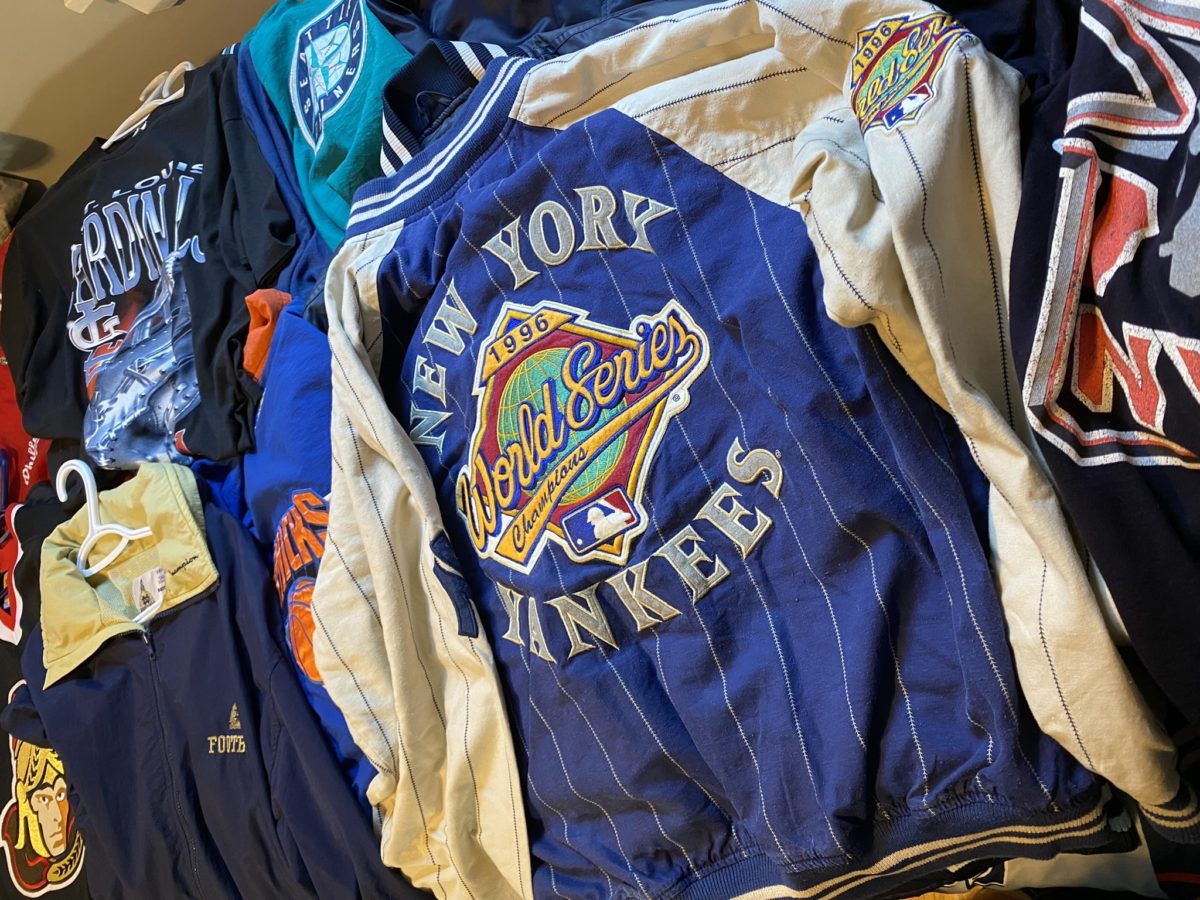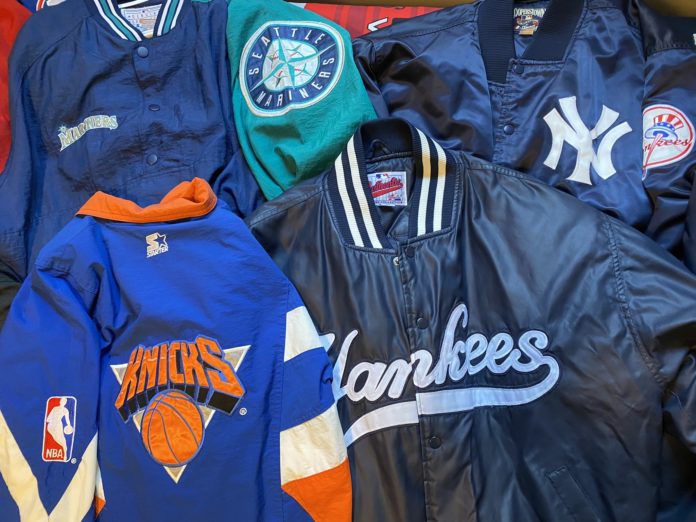Being socially conscious when it comes to clothing has its perks: you help the planet, it costs less, fast fashion slows down and the vintage pieces are phenomenal — as is the case with Jacob MacDonald’s collection.
MacDonald, a former student from St. Thomas University, started his vintage sports clothing collection at the beginning of the COVID-19 pandemic. He’s spent thousands of dollars on clothing from shops like Freddy Vintage in Fredericton and Tuck and Roll in Charlottetown.
“It’s an expensive adventure, but in the end, you get something that’s really unique,” said MacDonald.
He’s a fan of the New York Knicks and Yankees, Washington Capitals and Chicago Bears, but that doesn’t mean he won’t wear other teams’ merchandise.
“People are dogmatic about their sports teams, but sometimes you still have to appreciate a good jersey. I’m very willing to wear [pieces] of all kinds where I like the logo or the design.”
MacDonald categorizes himself as a nostalgic guy, collects vinyl and McFarlane sports figures, likes retro things and collects baseball cards, but he knows it’s a package deal when it comes to vintage clothing.
“Vintage is really easy to get into because you’re doing a good thing by going back and recycling the clothes instead of buying new jackets at H&M and Old Navy,” said MacDonald.
MacDonald’s favourite brand of sports clothing to recycle is Starter. Since 1971, it has made bomber jackets for the four major sports leagues in North America, recently celebrating its 50th anniversary in 2021. He got into the jackets because of his older sister telling him about how cool they were.
MacDonald said jackets could run you over $150 easily on the retro market as they’re in high demand, but “a first-time buyer will notice and appreciate the quality of stitching and insulation.”
“It’s iconic. You can wear them today and people from the 1970s, ‘80s and ‘90s know exactly what you’re wearing,” he said.
A reason why sports clothing from decades past has made a comeback in wardrobes across the world is the memories attached to the teams and players from before. The remembrance of when you became a fan or when you watched something incredible happen is shown through the vintage t-shirts, jackets, hats and figurines and posters displayed in rooms.

MacDonald believes it’s best to show them off.
“They’re such great and unique pieces to wear out and about. It’d be a shame to just keep them locked away,” said MacDonald.
His prized possession in a sea of vintage is his New York Knicks bomber jacket — an orange and blue striped pattern that catches the eyes when worn.
“I’m a big Knicks fan, as bad as they’ve been forever. The vibrant colours and design gets people to say, ‘wow, that guy’s wearing something flashy,’” said MacDonald.
Gen Z and millennials are conscious of their style and when it comes to vintage sports clothing, they take inspiration from the athletes.
Instagram pages from fashion mogul GQ, or the NFL, MLB and NBA have content specifically for “tunnel fits,” which are outfits athletes wear off the bus when going to their respective clubhouses before games.
They’re showcased by superstars LeBron James of the Los Angeles Lakers, Canadian Shai Gilgeous-Alexander of the Oklahoma City Thunder and Scottie Barnes of the Toronto Raptors.
But where do the clothes come from? E-shops like eBay and Etsy are hubs for people to sell their old collections, although MacDonald is skeptical.
“If possible, avoid eBay. They’re not quality checked by people who handle vintage clothing. Someone will decide to sell their vintage, but may not realize there’s damage,” he said.
Physical shops like Tuck and Roll on P.E.I. boasts a good collection of vintage clothing of all genres. Starting in the early 2010s, Robbie Carruthers noticed no shops in Charlottetown had good throwback pieces, so he began collecting vintage items for his store, which opened in 2017.
Athletes who had major brand deals like Bo Jackson and Michael Jordan, as well as then-new organizations like the Toronto Raptors and Vancouver Grizzlies, boasted “crazy colours and insane prints in true ’90s fashion,” so he stocked his shop with the like.
“The clothing industry recognizes ’90s gear’s hot and it’s just reproducing all the old stuff now. Some items can’t be reproduced and that’s the niche market a shop like mine needs to fill. You got to have those dope throwbacks,” said Carruthers.
Sports organizations are taking notice of the wave, and are producing jerseys, shirts, hats and hosting special throwback nights to capitalize on their “vintage” products. The MLB and the NBA have begun to re-release old jersey’s to generate buzz from fans of the old days and to market the game to new fans.
The NHL’s Ottawa Senators, Anaheim Ducks, Arizona Coyotes and Winnipeg Jets are embracing their heritage and, within the last few years, transitioned back to their inaugural ’90s logos and jerseys, something the fans have desperately demanded.
With this massive wave of vintage sports clothing coming back into the fray, shops like Tuck and Roll and Freddy Vintage have customers clamouring to get the latest pieces of memorabilia.
There’s a reason why clothing from the ’70s to early 2000s is sought after, as they’re conversation starters as MacDonald said, but they also offer uniqueness and colour combinations that are rarely seen in today’s sports world.
“Individuality is one of the reasons why I think vintage has become so popular,” said Carruthers.

